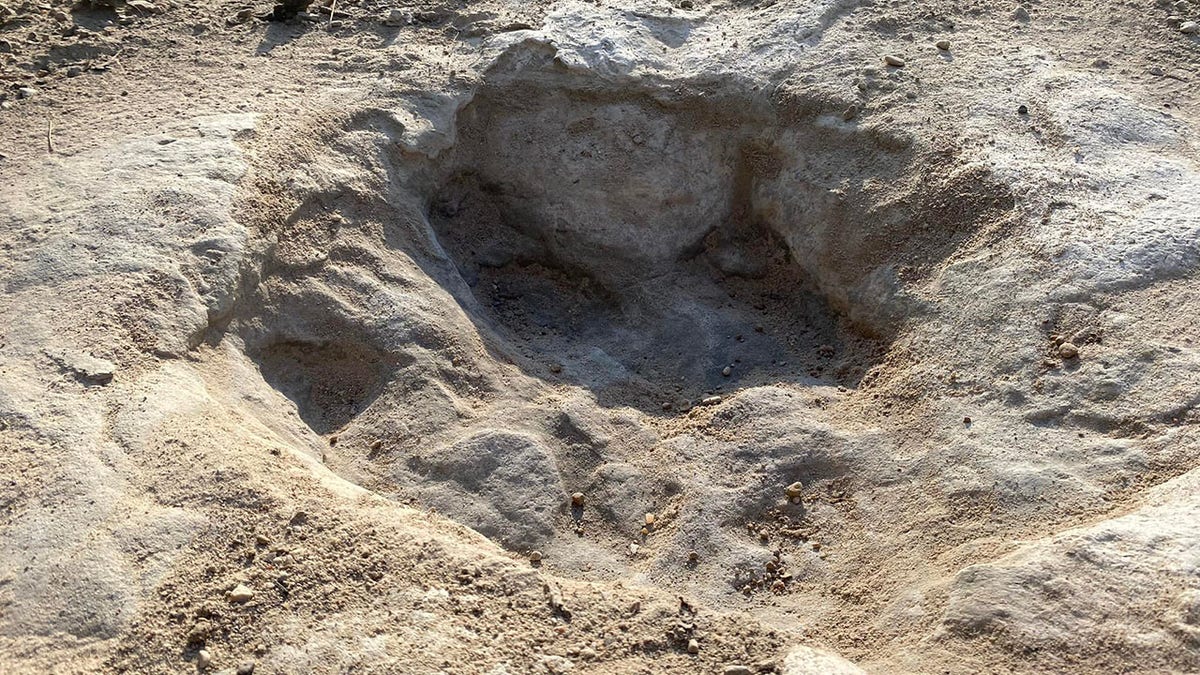How hard is it to care for reptiles?
A professional reptile handler joins 'Fox News Saturday Night' to discuss herpetoculture and brings some scaly friends with him.
Maryland paleontologists and volunteers participating in a dig at Dinosaur Park in Prince George’s County, uncovered the largest theropod fossil in Eastern North America, dating back 115 million years.
The discovery, along with other fossils found nearby, elevated the classification of Dinosaur Park in Laurel, Maryland, to a bone bed, a term used by paleontologists when bones form multiple species are found in the same geologic layer.
It is not the first bone bed discovered in Maryland, though it is the first one to be discovered in the state since 1887, according to a press release from the Maryland-National Capital Park and Planning Commission (M-NCPPC), Department of Parks and Recreation in Prince George’s County.
SOTHEBY'S TO AUCTION OFF SKELETONS OF AIRBORNE, AQUATIC DINOSAURS

Paleontologists and volunteers at Dinosaur Park in Laurel, Maryland discovered the largest theropod fossil, leading to the discovery of a bone bed geologic layer at the park. (M-NCPPC, Department of Parks and Recreation, Prince George’s County)
"Finding a bone bed like this is a dream for many paleontologists as they can offer a wealth of information on the ancient environments that preserved the fossils and provide more details on the extinct animals that previously may have only been known from a handful of specimens," JP Hodnett, the park’s paleontologist and program coordinator said. "Most paleontologists have to travel across the country or go overseas to find something like this, so having this rare find so close to home is fantastic!"
Hodnett is credited with making the initial discovery of the 3-foot shinbone, which was classified as that from a theropod.
Theropods are part of the dinosaur family that includes carnivorous dinosaurs like the Tyrannosaurus rex.
SKELETON CAST OF SPINOSAURUS, LARGEST KNOWN PREDATORY DINOSAUR, EXHIBITED AT CHICAGO MUSEUM

This illustration provided by Mark P. Witton in March 2023 depicts a juvenile Edmontosaurus being eaten by a Tyrannosaurus rex with a lipped mouth. The teeth on T-Rex and other big theropods were likely covered by scaly lips, concludes a study published Thursday, March 30, 2023, in the journal Science. The dinosaur's teeth didn't stick out when its mouth was closed, and even in a wide open bite, you might just see the tips, the scientists found. (Mark P. Witton via AP)
The shinbone, Hodnett hypothesized, was from an Acrocanthosaurus, which measured about 38 feet, and is the largest theropod from the early Cretaceous period.
Teeth from Acrocanthosauruses have been found at Dinosaur Park in the past.
"Dinosaur fossils are exceptionally rare in the eastern U.S., and among these only Maryland has produced dinosaurs from the Early Cretaceous Period," Matthew Carrano, a paleontologist with the Smithsonian, said in the release. "Typically, only one or two bones are found at a time, so this new discovery of a bone bed of fossils is extremely important. It is certainly the most significant collection of dinosaur bones discovered along the eastern seaboard in the last hundred years."
DINOSAUR QUIZ! HOW MUCH DO YOU KNOW ABOUT THESE PREHISTORIC CREATURES?

The tracks of an Acrocanthosaurus found in Dinosaur Valley State Park in Texas dates back to 113 million years ago. Paleontologists at Dinosaur Park in Laurel, Maryland, hypothesize that a fossil found in a newly discovered bone bed is from an Acrocanthosaurus measuring about 38 feet. (Dinosaur Valley State Park )
Thomas Holtz, a paleontologist at the University of Maryland, was the first to verify the discovery at the park and said the Laurel dinosaur site is "by far" the most important dig site east of the Mississippi River.
Not only was Dinosaur Park one of the first dinosaur fossil sites found in the U.S., but he also said it provides insight into the types of plants and animals there during a critical period in Earth’s history.
A 4-foot limb bone that is encased in ironstone was the first dinosaur fossil found in the bone bed, though it is unclear what type of dinosaur the bone came from.
CLICK HERE TO GET THE FOX NEWS APP
Since 2018, other plant and animal fossils have been discovered in the area, including a small tyrannosaur, which was an early T-Rex relative; a small theropod about the size of a chicken that ate meat; and a crocodile tooth.


